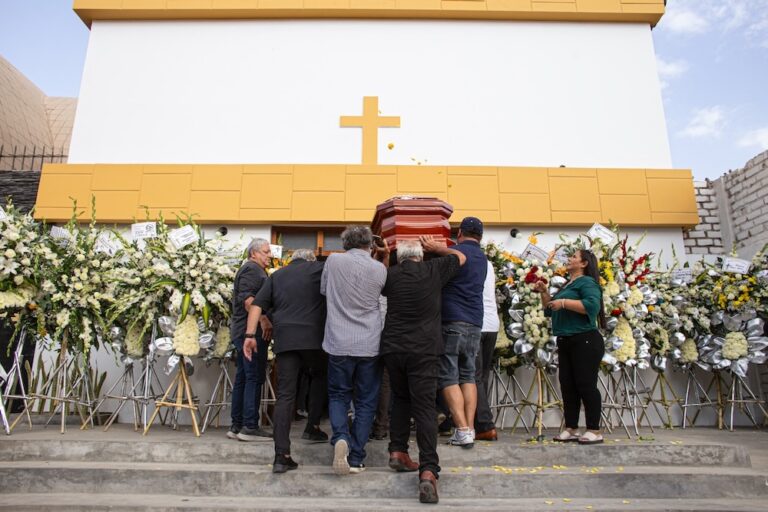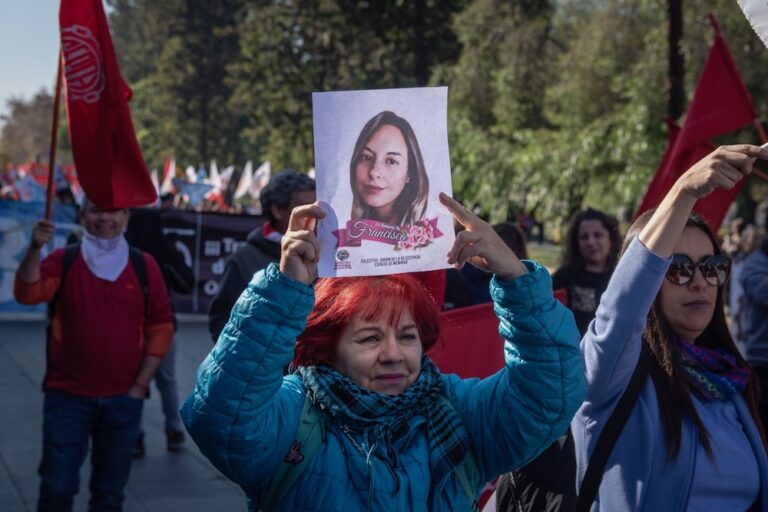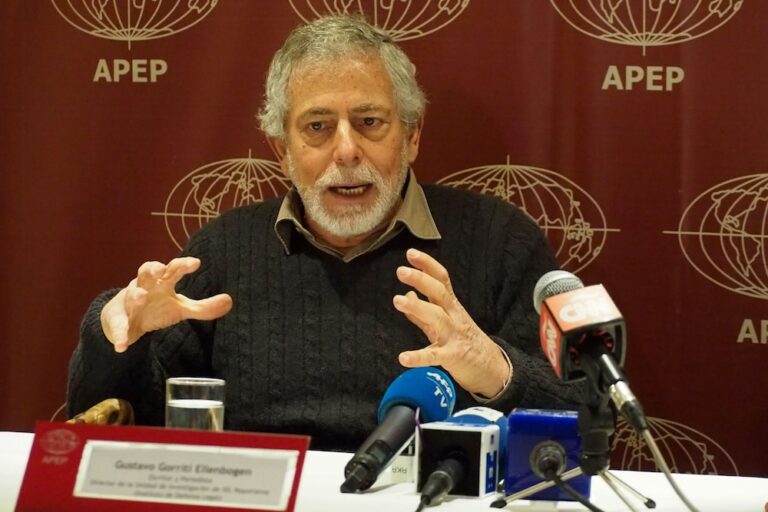“President Castillo and his government must be mindful that anti-press rhetoric by high-level public officials is dangerous and can lead to real violence against journalists,” said the Committee to Protect Journalists.
This statement was originally published on cpj.org on 16 March 2022.
Peruvian authorities must investigate the recent attacks on five journalists by supporters of President Pedro Castillo outside Peru’s Congress building and guarantee that the press can cover political demonstrations safely, the Committee to Protect Journalists said Wednesday.
During a March 8 vote by Peru’s legislature to approve Castillo’s new cabinet, supporters of the president hit and shoved the five journalists and damaged some of their equipment, according to news reports and Peru’s National Association of Journalists (ANP). The journalists were reporting on pro- and anti-government demonstrations, as a large group of protesters assembled outside the Congress building in the capital Lima.
The journalists attacked were Carlos Huamán, a camera operator for the Latina Noticias television station; Gian Masko, a freelance photographer; John Reyes, a photographer for La República newspaper; Rina Solórzano, a photographer for the Lima-based news magazine Caretas; and Diego Vertiz, a photographer for the newspaper Diario Uno. None of the journalists were seriously hurt, the ANP said.
“This is constantly happening: supporters of Castillo and (the ruling party) Perú Libre identify the press and start calling them garbage and sellouts,” Adriana León of the Lima-based free speech group Institute for Press and Society told CPJ via messaging app. “The attack was ugly. Everything is very tense.”
On Monday, March 14, Peru’s Congress voted to start impeachment proceedings against Castillo who, since his election last year, has rarely spoken to the press and frequently insults reporters in public, León said.
“Peruvian authorities need to send an unequivocal message that violence against the press is unacceptable and that those attacking journalists will be held accountable,” said Natalie Southwick, CPJ’s Latin America and the Caribbean program coordinator, in New York. “President Castillo and his government must be mindful that anti-press rhetoric by high-level public officials is dangerous and can lead to real violence against journalists.”
While the reporters were trying to cover the demonstrations, several people who were shouting pro-government slogans and appeared to be Castillo supporters shoved Huamán and damaged his camera and punched Reyes in the face, breaking his glasses. When Vertiz and Masko tried to come to Huamán’s aid and photograph the attack, they were also shoved, the ANP said.
One man wearing a Peru Libre t-shirt tried to hit Solórzano with a glass bottle and when she tried to defend herself, other government supporters threw water on her, pulled her hair, tore her pants, and kicked and shoved her, Solórzano told CPJ via messaging app.
Interior Minister Alfonso Chávarry denounced the attacks, which he said were being investigated by the Attorney General’s office, and said via Twitter: “I support the press.” CPJ emailed the press department of the Attorney General’s office but did not receive a reply.
During a Castillo campaign rally last May, a group of his supporters chased and hit two TV journalists covering the event, as CPJ documented at the time.



